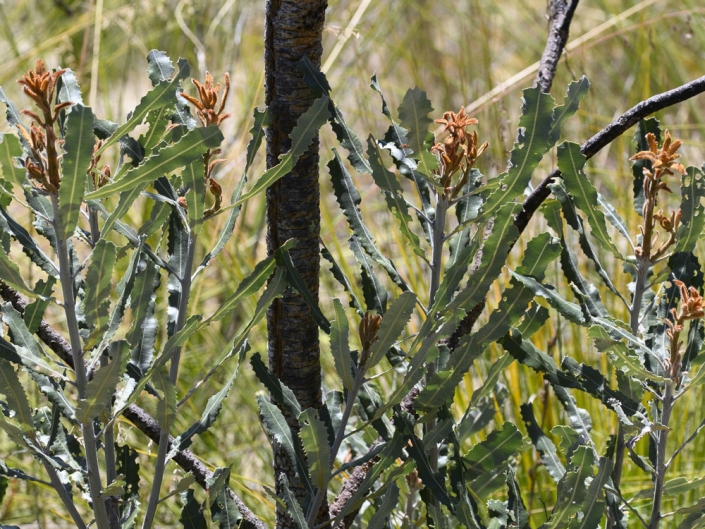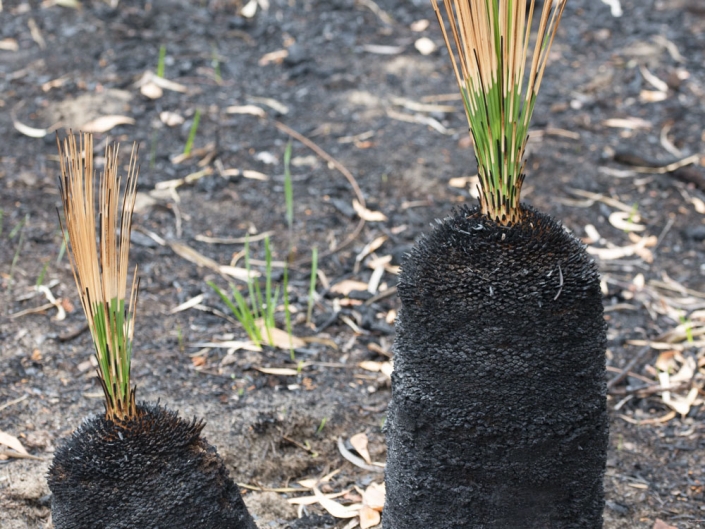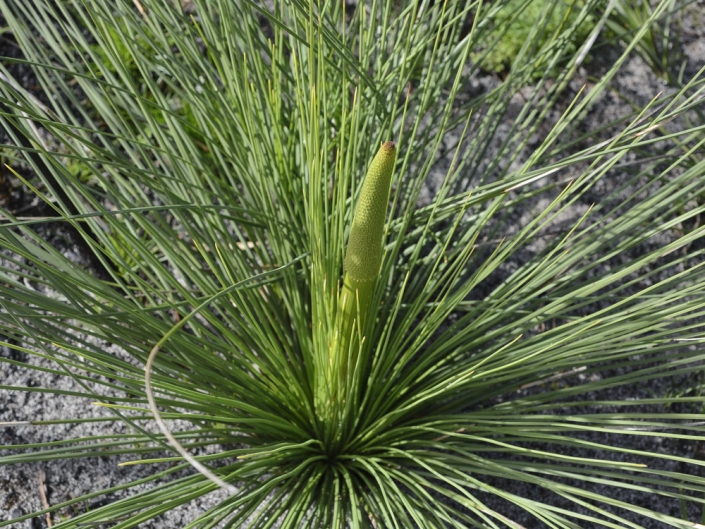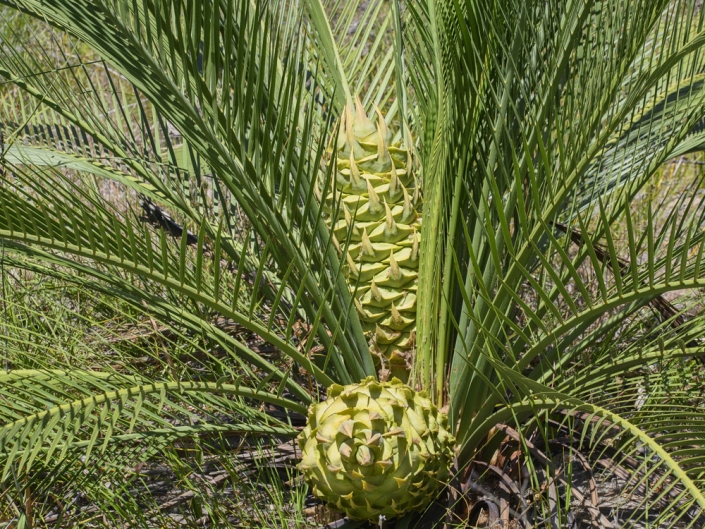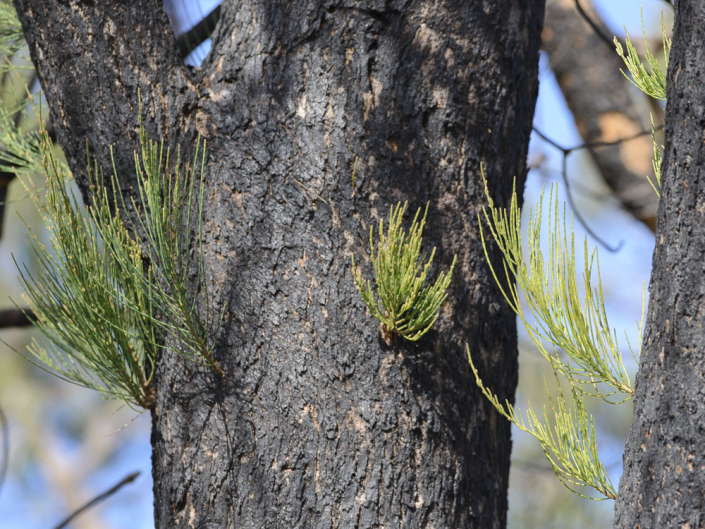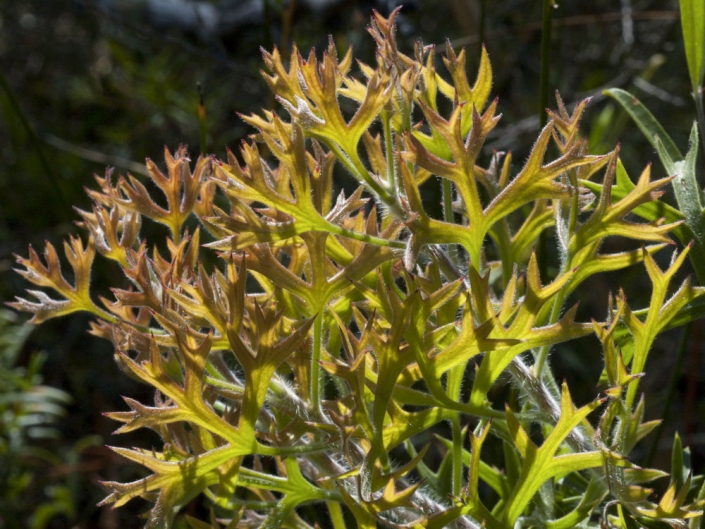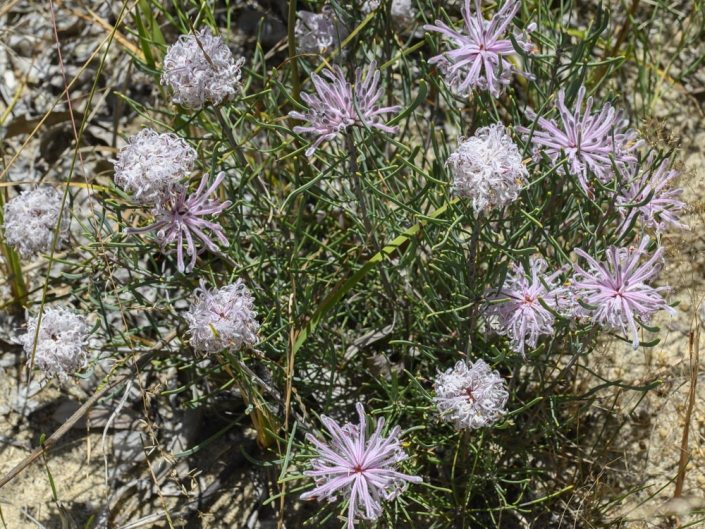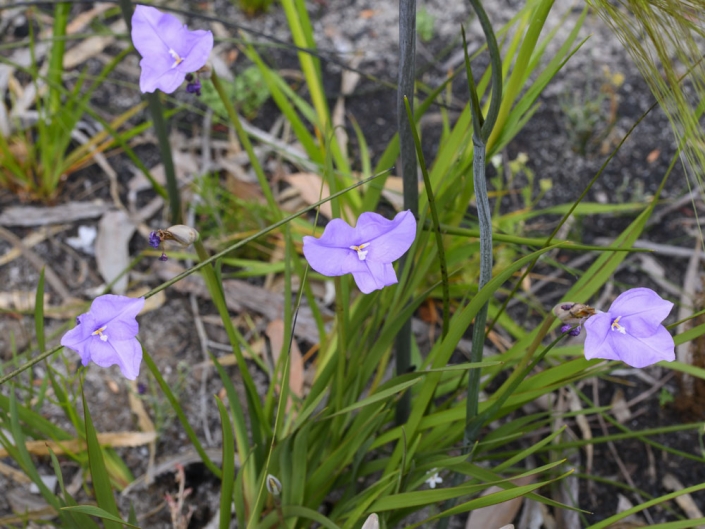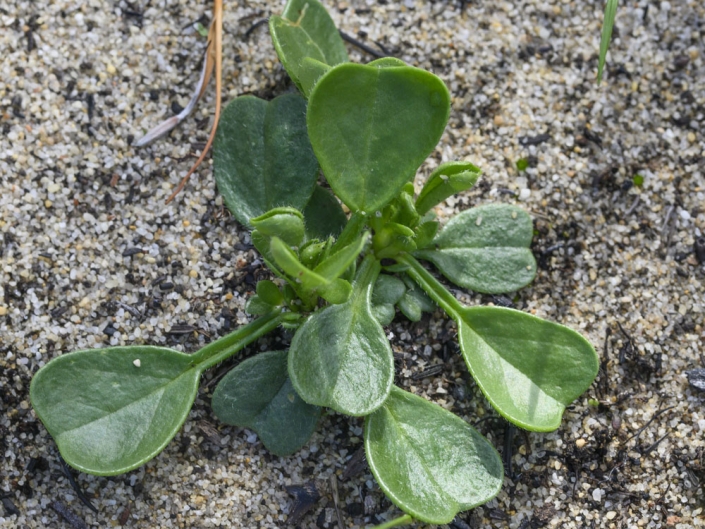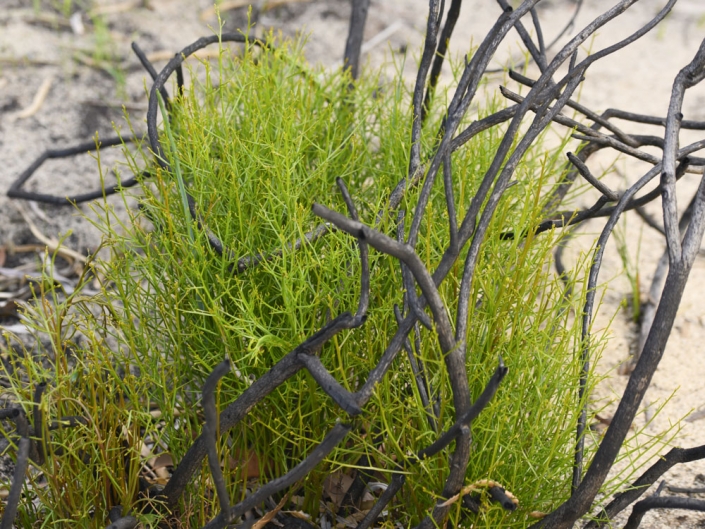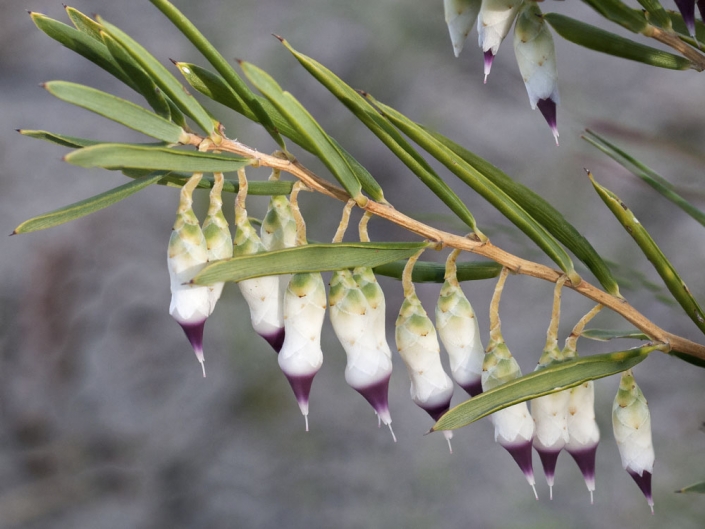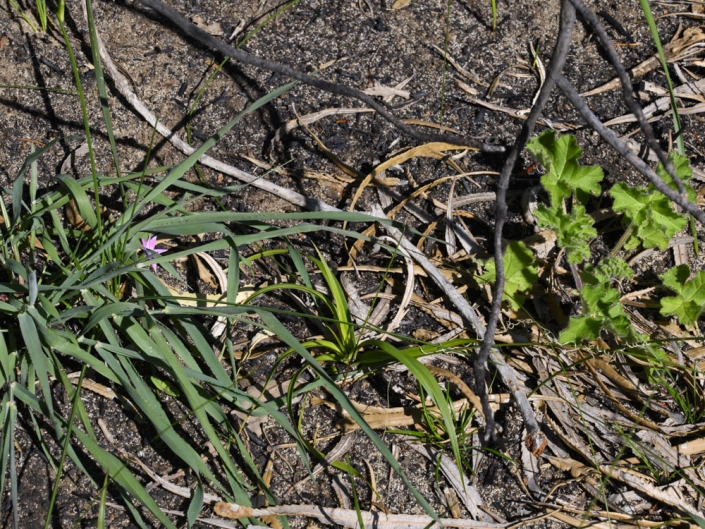Point of Interest 12: Fire-scarred Trees
This area shows fire impacts and recovery due to severe fire, especially east of the trail, where there is open banksia woodland. Common seasonal wildflowers here include Blueboy, Kangaroo Paws, Cottonheads and many others.
Common Wildflowers (see other Point of Interest 13 & 14 also)
Spring – Blueboy (Stirlingia latifolia), Salt and Pepper (Philotheca spicata), cycads
Late Spring – Purple Flag
Focus Topic 25. Fire Impacts and Recovery of Trees and Large Shrubs
A large fire burnt about 5 ha in this part of Warwick bushland in the 2019 summer. This was just one of many destructive fires in this area and some of this area (north of the school next to Erindale Road) was already burnt the year before. This area is slowly recovering due to resprouting and reseeding of native plant species. The largest visual impact is severe reduction of the tree canopy, but there are also fewer large shrubs in the understorey. You can observe how most trees here resprouted from thick branches in the canopy, or in more severely damaged specimens, from the trunk or from below ground. Some trees have died, and it will take many years to replace all the fine branches of the tree canopy of the others.
Fire promotes flowering in balgas (Xanthorrhoea preissii) and Cycads (Macrozamia fraseri), which resprout the most rapidly after fire. The following winter there is a flush of seedlings of plants which have long-term seed dormancy from the soil seed bank. Smaller plants that recruit after fire are listed in Focus Topic 27.
Focus Topic 26. Resprouting Understorey Plants
Recently burnt areas in banksia woodland are often dominated by plants that resprout vigorously after fire. These include many species of shrubs, geophytes and sedges, some of which are illustrated below. These resprout from subterranean stems or storage organs such as rhizomes, corms, bulbs and woody structures (lignotubers). The shrubs include Blueboy (Stirlingia latifolia), Daviesia species such as Marno, members of the heather family such as Pearl Flower (Conostephium pendulum), Yellow Buttercups (Hibbertia hypericoides) and many others. Geophytes flowering prolifically after fire include Milkmaids (Burchardia umbellata) and Bloodroots (Haemodorum species).
Resprouting Weeds
Unfortunately, many weeds also resprout vigorously after fire, as shown below. They also flower vigorously and produce many seeds, so can become locally dominant without effective control.








